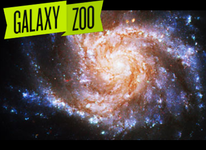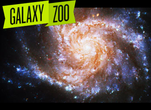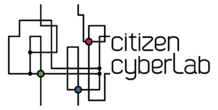Galaxy Zoo: Difference between revisions
No edit summary |
No edit summary |
||
| Line 50: | Line 50: | ||
|field_community_roles=Share interests, share news about space research... | |field_community_roles=Share interests, share news about space research... | ||
|field_team_work=N/A | |field_team_work=N/A | ||
|field_completion_level=Medium | |||
|field_free_text=test intégration free text | |field_free_text=test intégration free text | ||
| | }} | ||
test | |||
{{Citizen science project|field_free_text=test intégration free text | |||
}} | |||
{{bibliography | |||
|field_author=author | |||
|field_date=uthr | |||
|field_title=title | |||
|field_publication_type=other | |||
}} | }} | ||
Revision as of 20:07, 8 September 2013
Cs Portal > List of citizen science projects > Galaxy Zoo - ()
IDENTIFICATION
- Beta start date : N/A
- End date : Still open.
- natural sciences"natural sciences" is not in the list (Natural sciences, Engineering and technology, Medical and health sciences, Agricultural sciences, Social sciences, Humanities) of allowed values for the "Has subject area" property. > Astronomy (conservation"conservation" is not in the list (nature/conservation, environment/climate, geography/urbanism, history/archeology, biology/medicine/neuroscience, physics, space, N/A, other) of allowed values for the "Has citizen science subject area" property.)
- Others in the same subject areas:
- Others projects about conservation"conservation" is not in the list (nature/conservation, environment/climate, geography/urbanism, history/archeology, biology/medicine/neuroscience, physics, space, N/A, other) of allowed values for the "Has citizen science subject area" property.:
⇳ Description Galaxy Zoo is an online astronomy project which invites people to assist in the morphological classification of large numbers of galaxies. ➠ Purpose The main purpose is to understand how galaxies formed. According to the Galaxy Zoo team : “"Galaxies come in very different shapes and have very different properties. they may be large or small, old or young, red or blue, regular or confused, luminous or faint, dusty or gas-poor, rotating or static, round or disky, and they live either in splendid isolation or in clusters. In other words, the universe contains a very colourful and diverse zoo of galaxies. For almost a century, astronomers have been discussing how galaxies should be classified and how they relate to each other in an attempt to attack the big question of how galaxies form."” The classification of images in Galaxy Zoo would help scientists to understand the structure of the universe and determine whether there is anything "fundamentally wrong" with existing galaxy models. ? Research question [[Has research question::Some research questions
- Theorists believe that spiral galaxies can merge and become ellipticals and vice versa if they receive more gas or stars.
- Professor Michael Longo of the University of Michigan finds that there is a clear pattern of preferred spiral galaxy spins (or handedness) see article on http://arxiv.org. If the rotation of spiral galaxies is not random]], [[Has research question::it would force a major rethink of cosmology (potentially Nobel Prize implications). see forum discussion]]
TEAM
Project team page http://www.galaxyzoo.org/#/team Leader: Institution: Partner institutions: Contact: None. Use the forum.
USER TASKS
CONTRIBUTION TYPE: data interpretation
PARTICIPATION TYPOLOGY: crowdsourcing
GAMING GENRE NONE
GAMING ELEMENTS: Challenges
◉ Tasks description Volunteers users have to work with images taken by the Sloan Digital Sky Survey program. They decide whether the galaxies are elliptical or spiral and report if they have features like having spiral arm pattern bar or have undergone transformations. Volunteers can also decide to discuss image wich will appear then on a community wall. ⤯ Interaction with objects Volunteers don't manipule images, they just have to answer questions about it. However participants can add images to their favourite and present, comment, discuss their image to the community. Volunteer can experience a kind of particular relation with data. ▣ Interface
- Data type to manipulate: pictures
- interface enjoyment: somewhat cool/attractive
- Interface usability: easy to use
GUIDANCE
- Tutorial: x
- Peer to peer guidance: ✓
- Training sequence: x
- Individual performance: Somewhat
- Collective performance: Somewhat
- Research progress: Somewhat
❂ Feedback and guidance description No training sequence, no tutorial, but
- a an access to a contextual help at each step of the classification process.
- Peer-to-peer guidance through an active forum attached to Galaxy Zoo.
- The number of image classification is the only indivual perfomance information that volounteers can access in their profil page. No feedback about it.
COMMUNITY
- Main news site:
- Frequency of project news updates: N/A
- Type of events:
- Frequency of events :
⏣ Community description
- Community size (volounteers based)
- Role: Share interests, share news about space research...
- Interaction form:
- Has official community manager(s): yes
- Has team work N/A
- Other: Volunteers are active on the Galaxy Zoo forum. They post the more striking images and discuss what they are. There are already some interesting results.
- Community led additions:
Other information
PROJECT
Url:http://www.galaxyzoo.org/
Start date: 2007/07/12
End date: Still open
Infrastructure: Zooniverse
TEAM
Official team page:http://www.galaxyzoo.org/#/team
Leader:
PROJECT DEFINITION
Subject
natural sciences > Astronomy (conservation)
Description
Galaxy Zoo is an online astronomy project which invites people to assist in the morphological classification of large numbers of galaxies.
Purpose.
The main purpose is to understand how galaxies formed. According to the Galaxy Zoo team : “"Galaxies come in very different shapes and have very different properties. they may be large or small, old or young, red or blue, regular or confused, luminous or faint, dusty or gas-poor, rotating or static, round or disky, and they live either in splendid isolation or in clusters. In other words, the universe contains a very colourful and diverse zoo of galaxies. For almost a century, astronomers have been discussing how galaxies should be classified and how they relate to each other in an attempt to attack the big question of how galaxies form."” The classification of images in Galaxy Zoo would help scientists to understand the structure of the universe and determine whether there is anything "fundamentally wrong" with existing galaxy models.
Research question.
Some research questions
- Theorists believe that spiral galaxies can merge and become ellipticals and vice versa if they receive more gas or stars.
- Professor Michael Longo of the University of Michigan finds that there is a clear pattern of preferred spiral galaxy spins (or handedness) see article on http://arxiv.org. If the rotation of spiral galaxies is not random, it would force a major rethink of cosmology (potentially Nobel Prize implications). see forum discussion
ABOUT PARTICIPANT TASKS
Tasks description.
Volunteers users have to work with images taken by the Sloan Digital Sky Survey program. They decide whether the galaxies are elliptical or spiral and report if they have features like having spiral arm pattern bar or have undergone transformations. Volunteers can also decide to discuss image wich will appear then on a community wall.
Interaction with system objects.
Volunteers don't manipule images, they just have to answer questions about it. However participants can add images to their favourite and present, comment, discuss their image to the community. Volunteer can experience a kind of particular relation with data.
| Grey typology | Participation typology | Contribution type: | ||||||||||||||||||||||||||||
|---|---|---|---|---|---|---|---|---|---|---|---|---|---|---|---|---|---|---|---|---|---|---|---|---|---|---|---|---|---|---|
|
|
|
||||||||||||||||||||||||||||
| Gaming | ||||||||||||||||||||||||||||||
| Genre: | Gaming elements: challenges | |||||||||||||||||||||||||||||
| Interface | ||||||||||||||||||||||||||||||
| Data type to manipulate: pictures | interface enjoyment: somewhat cool/attractive Interface usability: easy to use |
Member profiles::minimal Member profile elements: pseudo, activity metrics, other |
||||||||||||||||||||||||||||
ABOUT GUIDANCE AND FEEDBACK
| Guidance | Feedback on | ||||||||||||
|---|---|---|---|---|---|---|---|---|---|---|---|---|---|
|
|
Feedback and guidance description.
No training sequence, no tutorial, but
- a an access to a contextual help at each step of the classification process.
- Peer-to-peer guidance through an active forum attached to Galaxy Zoo.
- The number of image classification is the only indivual perfomance information that volounteers can access in their profil page. No feedback about it.
COMMUNITY
| Tools | News & Events |
|---|---|
|
Communication: website, blog, forum |
Main news site: |
| Community description | |
|
Community size (volounteers based): |
|
Other information about community: Volunteers are active on the Galaxy Zoo forum. They post the more striking images and discuss what they are. There are already some interesting results.
Community led additions:
OTHER PROJECT INFORMATION
GalaxieZoo.png Yes [[has completion level::Medium]
http://www.galaxyzoo.org/#/team None. Use the forum.
Yes Astronomy natural sciences"natural sciences" is not in the list (Natural sciences, Engineering and technology, Medical and health sciences, Agricultural sciences, Social sciences, Humanities) of allowed values for the "Has subject area" property. conservation"conservation" is not in the list (nature/conservation, environment/climate, geography/urbanism, history/archeology, biology/medicine/neuroscience, physics, space, N/A, other) of allowed values for the "Has citizen science subject area" property. The main purpose is to understand how galaxies formed. According to the Galaxy Zoo team : “"Galaxies come in very different shapes and have very different properties. they may be large or small, old or young, red or blue, regular or confused, luminous or faint, dusty or gas-poor, rotating or static, round or disky, and they live either in splendid isolation or in clusters. In other words, the universe contains a very colourful and diverse zoo of galaxies. For almost a century, astronomers have been discussing how galaxies should be classified and how they relate to each other in an attempt to attack the big question of how galaxies form."” The classification of images in Galaxy Zoo would help scientists to understand the structure of the universe and determine whether there is anything "fundamentally wrong" with existing galaxy models. [[Has research question::Some research questions
- Theorists believe that spiral galaxies can merge and become ellipticals and vice versa if they receive more gas or stars.
- Professor Michael Longo of the University of Michigan finds that there is a clear pattern of preferred spiral galaxy spins (or handedness) see article on http://arxiv.org. If the rotation of spiral galaxies is not random]], [[Has research question::it would force a major rethink of cosmology (potentially Nobel Prize implications). see forum discussion]]
Galaxy Zoo Volunteers users have to work with images taken by the Sloan Digital Sky Survey program. They decide whether the galaxies are elliptical or spiral and report if they have features like having spiral arm pattern bar or have undergone transformations. Volunteers can also decide to discuss image wich will appear then on a community wall. data interpretation
crowdsourcing pictures, other: Thinking: yes Computing: no Sensing: no Gaming: no challenges
Volunteers don't manipule images, they just have to answer questions about it. However participants can add images to their favourite and present, comment, discuss their image to the community. Volunteer can experience a kind of particular relation with data. somewhat cool/attractive easy to use no yes no N/A N/A N/A No training sequence, no tutorial, but
- a an access to a contextual help at each step of the classification process.
- Peer-to-peer guidance through an active forum attached to Galaxy Zoo.
- The number of image classification is the only indivual perfomance information that volounteers can access in their profil page. No feedback about it.
minimal pseudo, activity metrics, other yes website, blog, forum Twitter, Facebook, other
N/A
Volunteers are active on the Galaxy Zoo forum. They post the more striking images and discuss what they are. There are already some interesting results.
Share interests, share news about space research...
N/A
Medium
test
Cs Portal > List of citizen science projects > {{{field_project_name}}} - ()
IDENTIFICATION
- Infrastructure:
- Developed with:
- Beta start date : N/A
- End date :
- ' > ()
- Others in the same subject areas: Some use of "" in your query was not closed by a matching "".
- Others projects about : Some use of "" in your query was not closed by a matching "".
⇳ Description
➠ Purpose
? Research question
TEAM
Project team page Leader: Institution: Partner institutions: Contact:
USER TASKS
CONTRIBUTION TYPE:
PARTICIPATION TYPOLOGY:
GAMING GENRE NONE
GAMING ELEMENTS: NONE
WHAT
WHAT
WHAT
WHAT
◉ Tasks description
⤯ Interaction with objects
▣ Interface
- Data type to manipulate:
- interface enjoyment:
- Interface usability:
GUIDANCE
- Tutorial: Somewhat
- Peer to peer guidance: Somewhat
- Training sequence: Somewhat
- Individual performance: Somewhat
- Collective performance: Somewhat
- Research progress: Somewhat
❂ Feedback and guidance description
COMMUNITY
- Communication:
- Social Network:
- Member profiles::
- Member profile elements:
- Main news site:
- Frequency of project news updates:
- Type of events:
- Frequency of events :
⏣ Community description
- Community size (volounteers based)
- Role:
- Interaction form:
- Has official community manager(s):
- Has team work
- Other:
- Community led additions:
Other information
PROJECT
Url:N/A
Start date:
End date:
TEAM
Official team page:
Leader:
PROJECT DEFINITION
Subject
> ()
Description
.
.
ABOUT PARTICIPANT TASKS
.
.
| Grey typology | Participation typology | Contribution type: | ||||||||||||||||||||||||||||
|---|---|---|---|---|---|---|---|---|---|---|---|---|---|---|---|---|---|---|---|---|---|---|---|---|---|---|---|---|---|---|
|
|
|
||||||||||||||||||||||||||||
| Gaming | ||||||||||||||||||||||||||||||
| Genre: | Gaming elements: | |||||||||||||||||||||||||||||
| Interface | ||||||||||||||||||||||||||||||
| Data type to manipulate: | interface enjoyment: Interface usability: |
Member profiles:: Member profile elements: |
||||||||||||||||||||||||||||
ABOUT GUIDANCE AND FEEDBACK
| Guidance | Feedback on | ||||||||||||
|---|---|---|---|---|---|---|---|---|---|---|---|---|---|
|
|
.
COMMUNITY
| Tools | News & Events |
|---|---|
|
Communication: |
Main news site: |
| Community description | |
|
Community size (volounteers based): |
|
Other information about community:
Community led additions:
OTHER PROJECT INFORMATION
, other:
Thinking:
Computing:
Sensing:
Gaming:
title. author (uthr"uthr" is not a number.)
title. author (uthr)





